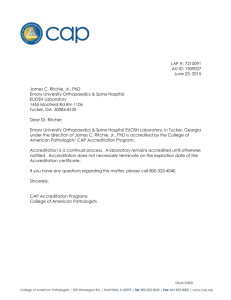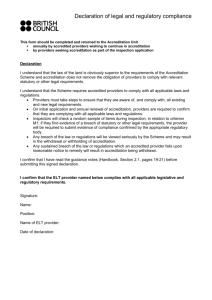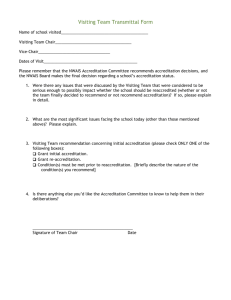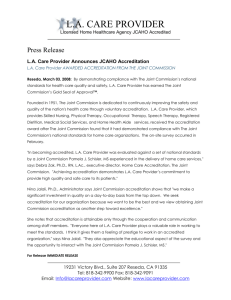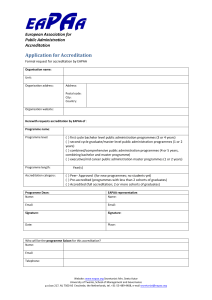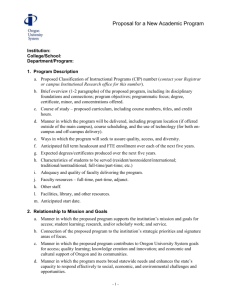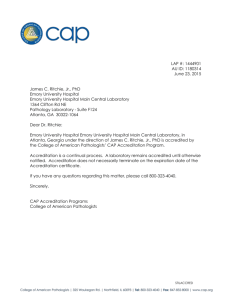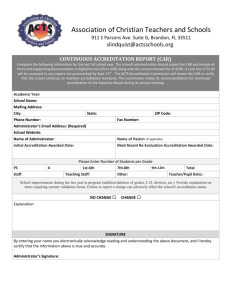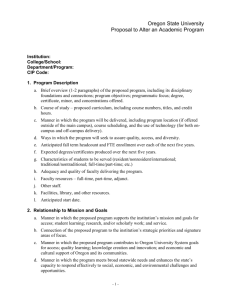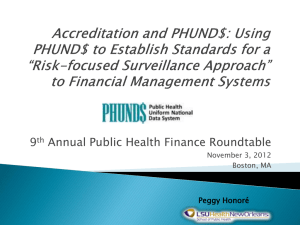registration of higher education institutions and accreditation of their
advertisement
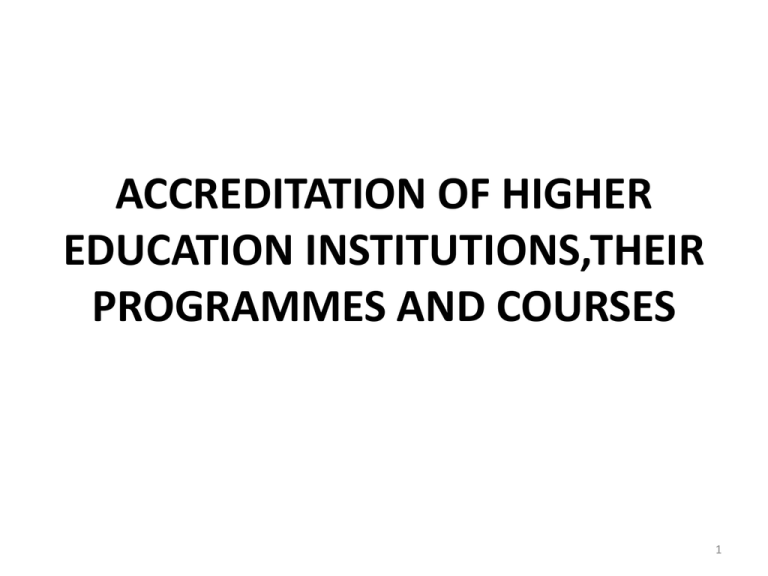
ACCREDITATION OF HIGHER EDUCATION INSTITUTIONS,THEIR PROGRAMMES AND COURSES 1 THE ROLE OF ZIMCHE • The regulatory authority of higher education in Zimbabwe • Registration • Quality assurance • Accreditation • The concept of higher education institutions (HEIs) 2 Registration • • • • Who is to be registered? Previously registered institutions New Private institutions New state institutions • Instruments • The register. 3 Accreditation • The Concept: to certify/guarantee • Types: Institutional, programme, course • Does it meet certain minimum laid down standards? • ZIMCHE is the External QAA 4 Institutional Accreditation • There are 10 criteria to be satisfied. (Ref. ACCR 1A) 1. The institution: 2. Governance structures and procedures 3. Physical Structures 4. Staffing 5. Staff promotion procedures 6. Student admission 7. Student registration 8. Special facilities 9. Assessment of students 10 Student and staff welfare 5 1. The institution • What are its vision, mission, goals and objectives? • Policies, action plans • Relevance to Zimbabwe • Accessibility 6 2. Governance Structures and Procedures • Administration hierarchy and their roles • Key committees and their roles 7 3. Physical Structures • • • • • Classrooms Office space Toilets Library Laboratories and workshops 8 4. Staffing • Key administrators and their qualifications • Academics and their qualifications and experience • Staff/student ratios 9 5. Academic Staff Promotion • There has to be clearly stated policies, criteria and procedures for promotion to all grades 10 6. Student admission • There has to be clearly stated policies, criteria and procedures for admission to all programmes. • No discrimination is accepted • Mature and special entry policies must be stated. 11 7. Student Registration • Clear and accurate records must be kept • Staff/student ratios must be controlled 12 8. Special facilities • • • • Computers Access to internet Specialist teaching equipment. Specialist rooms, workshops, fields and grounds. 13 9. Programme Regulations • These must be clearly laid out and documented. • Attendance requirements • Assessment procedures and requirements. • These now need to be ratified by ZIMCHE before a course or programme begins. 14 10 Staff and Student Welfare • • • • • • • Residences Transport Food outlets Sporting facilities Non-resident students The physically challenged &&&&&&&&&&&&& 15 Programme and Course Accreditation • Every degree programme will be accredited • Every degree course will be accredited. • Areas of assessment are Inputs, Processes and outputs/impact • Ref. ACCR 2A 16 Input Criteria • Programme Design: Relevance to mission, to students, employers and the nation. Articulation with other programmes and provision of learning materials. • 2. Student selection and admission • 3. Staffing quality and quantity • 4. Teaching and learning strategy • 5. Student assessment policies and procedures. • 6. Resources (infrastructural, material and financial) • 7. Programme administration processes • 8. Regulations 17 Programme Process Criteria • • • • • • • Programme coordination Ensuring student academic development Teaching and learning interactions Student assessment practices Rigour and security of assessment Coordination of work-based learning Delivery of post graduate programmes. 18 Programme Output/Impact Criteria • • • • 1.Student retention and throughput 2. External acknowledgement 3. Employment of graduates. 4. Programme review: user surveys, reviews, impact studies and use of results. • &&&&&&&&&&&&&&&&&&&&&&& 19 Course accreditation • Relevance to the programme • (The rest: same as in programme accreditation.) 20 Modus operandi • • • • • • • Initiation Institutional claims (IQA) Peer review (EQA) – specific training Discussion Results Publication of results ZIMCHE database 21 NOTE • • • • • • For the good of the HEI External recognition Colleagial approach The need for IQA teams The need to be realistic and not too ambitious Quality is the buzz word in University education 22

